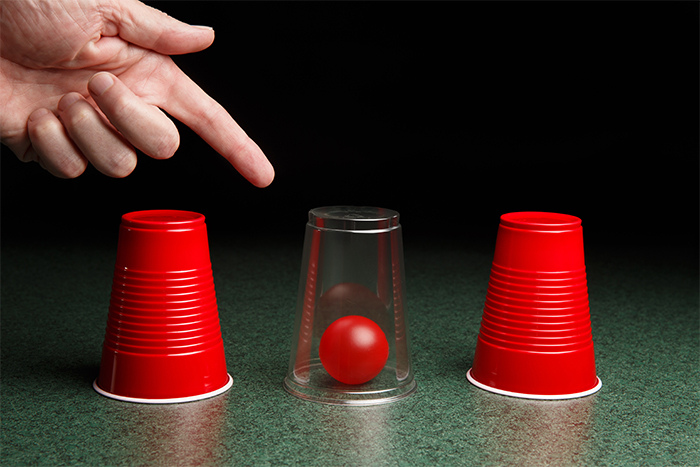Many years ago, I was working with an MGO to help create her donor portfolio. We were going through a process called the “gut check” to separate which donors were actually qualified from those that weren’t.
We came upon one donor whom the MGO described in great detail. She knew the donor’s interests and passions and the donor’s story; she talked about how much they had in common. It was amazing.
The only problem: this donor hadn’t given in over two years, she didn’t have any type of high wealth indicator status to show capacity… and when she did give, it was a very low four-figure gift. In this portfolio, the donor wouldn’t even make it into her portfolio, or she’d be considered a C-level donor.
Turns out, this MGO was meeting with this donor at least once a month for coffee or lunch and had numerous other communications with the donor. I asked why she was spending so much time with this particular donor. Her answer, “We just get along so well; we enjoy spending time together.”
Unfortunately, this happens quite a bit with mid-level, major gifts, and planned giving officers. They become so emotionally attached to a donor for any number of reasons, and they lose their focus. Without thinking about it, they’ve violated the organization’s mission.
Now, you may think that sounds harsh, but you need to realize that a non-profit is investing in you to create relationships with donors. And those relationships are meant to produce net revenue for your projects and programs. There is always an economic reality to every donor portfolio. If you aren’t allocating your time effectively with the right donors, you’re actually hurting the bottom-line net revenue of your non-profit.
So, in the case I just mentioned, even though the MGO had this great relationship with this donor, it was ultimately hurting her performance AND less money was being allocated to programs because the MGO wasn’t focusing her time on the right donors.
The way you correct this problem with your donor caseload is to tier the portfolio A-C. Doing this will help frontline fundraisers focus their planning and assign the right amount of time to the right donors.
Here’s how you tier your portfolio for major gifts. Now, there are some nuances that will be different for mid-level and planned giving, but it’s roughly the same process. Also, let’s assume you now have 150 qualified donors that make up your portfolio:
- First factor to review: Inclination — Inclination is looking at how much the donor gives and how recently. It’s pretty basic stuff. You can easily list all of your donors in Excel, and sort them by giving level and how recently they gave the gift.
- Second factor: Capacity — Capacity means the donor’s ability to give. What do you know about their wealth? Do you have any wealth-indicator analysis data on them? Do you know what they give to other organizations? Do you know the donor’s story? All of this information will help you match capacity to inclination and help you rank your donors.
- Actual Tiering — Okay, now that you have ranked all 150 donors, you can begin to tier the donors A, B and C. (And they all need to be real donors; no wealthy non-donors should be in your portfolio, even if they have tons of capacity. You want only qualified donors in your portfolio.)
- “A” level donors — These should make up 10-15% of the total number. So, 15-23 donors of the 150. The value of these donors will be somewhere between 45-50% of the total value of the caseload. So, if you have a $1MM portfolio, it’s between $450,000 to $500,000.
- “B” level donors — These should make up 30-40% of your portfolio, 45-60 donors. If cultivated properly, they have the ability to move up, over time, to A-level status.
- “C” level donors — They are the lowest level, usually four-figure donors. They may be loyal, but you’re not sure if they’ll move up or not. They’ll make up between 75-90 of your donors.
Now that you have your donors tiered, take another look at your “A” level donors. Make sure they have the capacity to give five-, six-, or seven-figure gifts.
This is the group of donors that you are going to spend 50% of your time on.
That’s right. Half of your time will be spent really understanding these donors’ passions and interests, showing these donors in a very personal way how their gifts have made a difference, and spending a great amount of time finding offers for them that match up to their passions and interests.
To be sure, this takes time and effort. However, if you’re focused on the right donors, you’ll be using your organization’s investment in you wisely. And this also means you’ll ultimately create deeper relationships with donors who have both the inclination and the capacity to help your organization grow.
Jeff
PS — If you want to know what to do once you have your donors tiered properly, download a copy of our FREE white paper, “Tiering Your Donors: The Key to a Focused Caseload.”
A version of this post originally appeared on the Passionate Giving Blog on March 22, 2021.
![Are You Focused on the Right Donors? Happy smiling fundraiser and donor sitting in a café laughing and talking. [Are You Focused on the Right Donors?]](https://veritusgroup.com/wp-content/uploads/2024/03/AdobeStock_655735968.jpeg)


![5 Reasons Why We Love Mid-Level, And You Should Too! [Podcast Episode]](https://veritusgroup.com/wp-content/uploads/2022/11/Podcast-Episode-Blog-Post-Header-Image-5.png)



I totally agree with this, and have fallen into this. But with that said, and assuming that I am performing at a level I should be, there is something to be said for the encouragement that comes from meeting with certain financial partners, even if they’re not at the requisite tier for frequent meetings. For me, it’s these folks that fuel me, and they actually drive me to do way more than if I hadn’t met with them. These relationships are hard to measure, but still worth considering.
Agree, however it is important to pay attention to those that are giving every month, even if these gifts are small. Many smaller gifts add up to major donations, when put together.